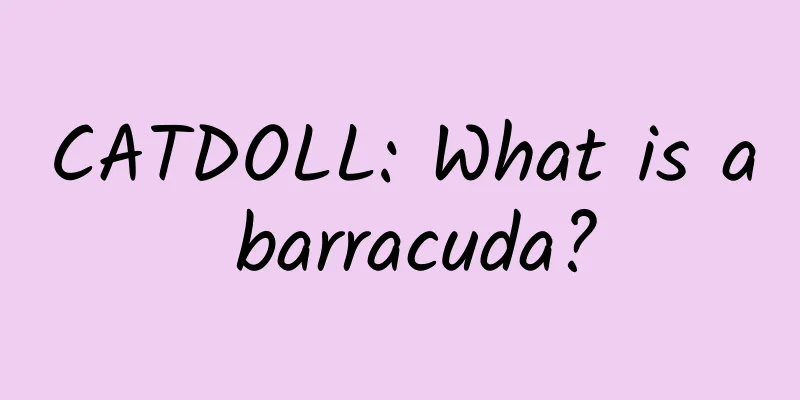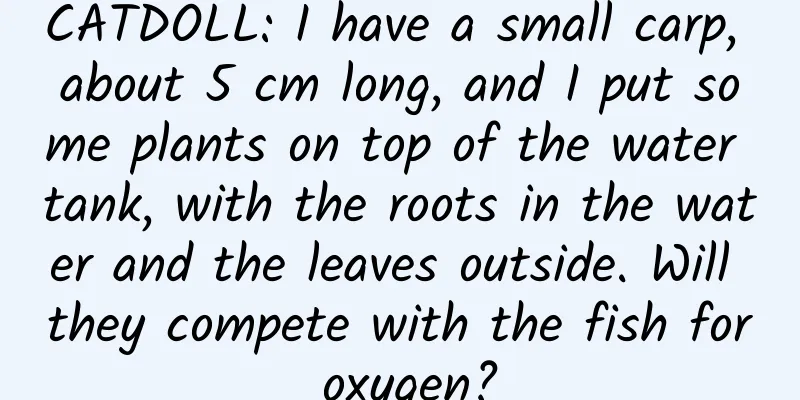CATDOLL : CATDOLL: What kind of fertilizer and water is good for white shrimp before releasing shrimp fry?

|
In the shrimp farming process, fertilizing water is an extremely important task, but in actual operation it is often counterproductive. Conventional fertilizing methods have certain advantages and disadvantages. How to grasp the principles of fertilizing water and master the correct approach are the two key issues discussed in this article. It has long been a consensus among shrimp farmers and technicians that raising water celery first is the right path for shrimp farming. Shrimp are born and raised in water, and the relationship between shrimp and water is like the relationship between humans and air. Without a healthy and suitable aquaculture water environment, no matter how nutritious the feed is, or how careful the management is, it is impossible to achieve the ultimate success of aquaculture. Before stocking, farmers all know how to fertilize the water and understand the importance of fertilizing the water. However, in actual production, it is often twice the result with half the effort. Some water is difficult to fertilize, and some water becomes worse after a few days of fertilization. The fertilization effect is often not ideal. 1. Principles of fertilizer and water before planting 1. The nutrients (nitrogen, phosphorus, potassium and other trace elements) in the water and fertilizer should be comprehensive and balanced. 2. Inorganic fertilizer (chemical fertilizer) is a quick-acting product, which fertilizes and hydrates quickly but lasts for a short time; organic fertilizer is a long-acting product, which fertilizes and hydrates slowly but lasts for a long time. The combination of the two can achieve a good fertilization and hydration effect that is both fast and stable. 3. When using inorganic fertilizer, you should apply it in small amounts and multiple times according to the sunlight conditions. If the light is strong and the light duration is long, apply more fertilizer, otherwise apply less fertilizer and multiple times. Otherwise, a large amount of fertilizer will sink to the bottom of the pond after fertilizing on rainy days, which may cause moss to multiply. 4. The amount of basal fertilizer must be sufficient. The existing nutrients in the pond (such as silt) and the nutritional structure and quantity of the basal fertilizer applied must be taken into consideration. Apply less fertilizer when there is a lot of sludge, and apply more fertilizer when there is less sludge or it is a new pond. 5. When there is less silt at the bottom of the pond, the effect of applying only microbial preparations (live bacteria) to fertilize the water is poor, because after these bacteria are applied, there is nothing for them to decompose and turn into fertilizer. 6. After planting the seedlings, it is advisable to apply topdressing in small amounts and multiple times. Use urea and other nitrogen fertilizers less and with caution, otherwise the ammonia nitrogen content may increase. 7. When the actual nitrogen-phosphorus content in the water body exceeds 10:1, diatoms are prone to multiply in large numbers; when the nitrogen-phosphorus ratio is 3:1-7:1, or even close to 10:1, green algae are prone to multiply in large numbers; but when the nitrogen-phosphorus ratio is close to 1:1, toxic dinoflagellates and flagellates are prone to multiply. 8. After fertilization, the water transparency should be around 30cm. Green water (light green, emerald green, yellow-green or mung bean color) is relatively stable than brown water (brown, tea brown). If you want to cultivate relatively stable water, you should try to adjust the type and amount of fertilizer to cultivate green water. 2. Advantages and disadvantages of conventional fertilizer and water method The conventional way to fertilize water is to first clean the pond and poison the pond, and then add water to disinfect and fertilize the water. The water can basically be fertilized, but in many cases, the water becomes clear or turns into algae in a week or half a month at most. If you only use products containing chemical fertilizers to fertilize the water, the effect will be relatively fast, but it will not last long. There may be many farmers who use chicken manure, duck manure, pig manure, inferior powder (commonly known as yellow powder), peanut bran, soybean meal, rice bran, and some chemical fertilizers, commercially available fertilizer products, etc. to fertilize the water, and the fertilization effect is quite good, but often the water will easily become clear, turn into algae, and turn into algae in about ten days and half a month. This is because the nutrients of the fertilizer are still incomplete and unbalanced, resulting in certain nutritional deficiencies (mostly nitrogen fertilizers are sufficient but phosphorus fertilizers are insufficient), and the growth of certain types of algae is inhibited, while it is just suitable for the growth of other types of algae and turns into algae. Some people also use live bacteria products to fertilize water, such as Haowangnong EM bacteria, which contains photosynthetic bacteria, Bacillus, nitrifying bacteria, etc. Some are effective, while others are not. Why? For example, EM bacteria live bacteria are equivalent to our rice cooker and electricity, and the fertilized water products (chicken manure, rice bran, soybean meal, etc.) are like the rice we put in. How much rice can cook how much rice. EM bacteria live bacteria mainly play a decomposition role, and it decomposes gradually. If there are not many nutrients or silt, the fertility is certainly not enough. If the fertility is not enough, the water will inevitably change, especially in new ponds, when there is little feed in the early stage of breeding, and there is little shrimp excrement, there are few nutrients in the pond water, how can the effect of bacteria be maintained for too long? Unless some nutritious substances are added to the Haowangnong EM bacteria product. Amino acid fertilizer has become popular in recent years. There are many such products on the market, such as amino acid fertilizer essence, amino acid fertilizer paste, and amino acid fertilizer liquid. In addition to compound amino acids, the main ingredients also include active peptides, multi-dimensional multi-minerals, and even compound beneficial bacteria. It works quickly and has good effects, because amino acids are used faster than ordinary proteins, are rich in nutrients, and have a longer-lasting fertilizer effect. However, after amino acids are decomposed, they mainly produce nitrogen fertilizers. They may also turn into algae due to the lack or imbalance of phosphorus, potassium, trace elements, etc., so some pond water is still prone to discoloration. 3. Correct way to fertilize and water The toxic pond can be filled with water about 20 cm, just enough to submerge the bottom of the pond. You can choose any commercially available disinfectant (see Appendix 1), and use the pond water that has just been used with disinfectants to rinse the slopes of the pond. As long as you do not use highly toxic residual drugs and there is not much silt on the bottom of the pond, there is no need to drain the disinfected water. The water that has just been disinfected does not contain viruses and bacteria, and is cleaner than external water. It is redundant to drain and then add water again, which may also be time-consuming and electricity-consuming. Some people also like to use pesticides to kill snails. Pesticides are often highly toxic and have a long residual time, which is very harmful to shrimps. Therefore, you must wait until the drug properties disappear before adding water. It is best to drain the water disinfected with highly toxic pesticides. Wait until the disinfectant properties basically disappear (not completely). You can add water. If conditions permit, it is best to choose to add water at noon, afternoon, or evening on sunny days. It is not recommended to add water in the second half of the night because algae tend to sink at night and on rainy days. The water inlet should not be too shallow (the environment is prone to changes if there is less water), and it is recommended to be more than one meter. Some people even use fully enclosed breeding, and they will not add large amounts of water after filling it up with water the first time. You can use quick-acting water fertilization products (such as chemical fertilizers, preferably compound fertilizers, as long as they do not contain live bacteria) to fertilize the water, and use some disinfectants that are not very destructive to algae at a dose slightly higher than the recommended treatment dose (some farmers do not disinfect the entire pond water before stocking the seedlings). After the medicinal properties of the disinfectant have basically disappeared, you can apply long-acting fertilizers and microbial preparations (live bacteria) products to adjust the water and stock the seedlings. Organic fertilizer and Haowangnong EM bacteria can be applied before and after stocking. According to the calculation of one mu of pond and one meter of water depth, according to the degree of fatness of the pond, the rapid fertilizer and water products can be selected from any of the following methods: ① 5-20 catties of urea or ammonium carbonate plus 2-5 catties of phosphate fertilizer, plus 1-3 catties of compound fertilizer; ② 1.5-2 kg of unicellular algae growth hormone (abbreviated as unicellular algae) plus 2-3 catties of compound fertilizer; ③ Other commercially available rapid fertilizer and water products plus a small amount of compound fertilizer. Long-term fertilizer can be: 3-5kg Haowangnong EM bacteria plus 2-3 jin of probiotics, mixed with 3-5 jin of shrimp feed (you can also add commercially available organic fertilizer products to ferment together), add appropriate amount of water, soak in the open for 2-3 days (mainly for fermentation) and then sprinkle over the whole pond. The amount of bacteria applied for the first time must be sufficient, and it is recommended to use an excess amount. Why choose shrimp feed fermentation instead of chicken manure, soybean meal, etc.? Because chicken manure is rich in organic matter, but the effective nitrogen is only about 4%, while shrimp feed contains about 40% protein, and there are many varieties of raw materials, and the nutrition is comprehensive. One pound of shrimp feed is almost equivalent to the nutrition of 10 pounds of chicken manure. Although the protein content of soybean meal is more than 40%, the nutrition is single, lacking phosphorus, potassium and other trace elements. Shrimp feed for shrimp farming is made from local materials, with few impurities and basically no pollution to the pond. The fermented shrimp feed is slowly decomposed by live bacteria, continuously supplying nutrients to the pond water and continuously producing fertilizer; the crumbs can also be fed by zooplankton (commonly known as water beads in the Pearl River Delta); shrimp fry eat a very small amount of fermented shrimp feed, which is more conducive to digestion and absorption. It can be said to be a method that kills three birds with one stone. 4. Causes and countermeasures of fertilizer and water failure 1. Algae is also a kind of plant. Any plant growth requires seeds, fertilizers, and light. None of the three can be missing. Therefore, if you want to fertilize water, you must have the following three points: (1) Algae species: The algae used to fertilize the water must be healthy, complete in variety and balanced with each other; (2) Fertilizer: The fertilizer should be nutritionally balanced, with sufficient amounts of both quick-acting and long-acting fertilizers; (3) Sunlight: Plants cannot grow without sunlight. At the same time, there should be few harmful organisms in the water, and environmental conditions such as pH and water temperature should be suitable. 2. Possible reasons for failure of fertilizer and water: (1) The water source (such as groundwater, lean water) itself contains few algae species. For example, the water in high-level ponds, mulch ponds, sandy soil ponds, etc. is not nutritious enough and lacks various nutrients required for algae growth; (2) Excessive use of disinfectants with significant side effects kills algae and microorganisms, preventing them from reproducing and growing; (3) The pond water is acidic; (4) Although fertilizers are applied, algae cannot reproduce and grow due to the lack of certain types of nutrients or the loss of fertilizer effect; (5) Insufficient sunlight or low temperature on rainy days will cause algae to grow and reproduce slowly; (6) There are many zooplankton (such as rotifers, copepods, and Artemia) that feed on algae in the water; (7) Excessive amounts of algae in the water (such as Cladophora, Enteromorpha, and Ditch Grass, commonly known as moss) inhibit the reproduction and growth of unicellular algae. 3. Countermeasures: After finding out the cause, corresponding countermeasures should be taken, such as adjusting the water to acidic with quicklime, applying fertilizer quickly when fertilizer is insufficient, and detoxifying with organic acids such as citric acid and amino acids when excessive disinfectants are used. You can also introduce some water from a neighboring pond rich in algae and then re-fertilize the water. Ponds that are prone to moss can be drained during idle periods to prevent algae from growing. Before stocking, add a small amount of water (just enough to submerge the bottom of the pond) to allow it to grow and reproduce, and then use 7-8ppm copper sulfate or 1-2ppm herbicide or high-concentration bleaching powder to kill the algae. When there is moss in the pond where shrimp fry have been placed, do not immediately apply fertilizer or use algaecides to kill the algae (fertilization, the ability of moss to compete for fertilizer is much greater than that of unicellular algae, and the more fertilizer you apply, the clearer the algae; killing algae will also kill the beneficial unicellular algae and destroy the algae phase balance, and the decomposition of a large number of dead algae will damage the water quality), but should be removed manually and the water level should be deepened as soon as possible (when there is no visible light at the bottom, benthic algae cannot grow). It is best to add water during the day or evening to bring in fresh algae species, and then fertilize and fertilize the water. It is recommended to apply small amounts and multiple times, first use some inorganic fertilizers (such as compound fertilizers, various algae cultivation agents), and then apply live bacteria (such as probiotics, probiotics, EM bacteria, etc.) to retain water. Or you can sprinkle dolomite powder on the moss to cover it, which can have a certain cleaning effect. The fundamental purpose of adjusting water color and transparency before releasing shrimp fry is to maintain the ecological balance of the water body. To maintain the ecological balance of the water body, we should adhere to the path of ecological and healthy breeding. After the release of shrimp fry, the breeding of white shrimp usually requires more than 90 days of breeding before it can reach the market specifications. During the breeding process, organic matter such as shrimp excrement, leftover bait and dead organisms accumulate continuously, polluting the bottom. Changes in water quality, specifically changes in water color and transparency, are often caused by bottom pollution. Therefore, water quality management centered on improving bottom quality is one of the key measures for the success of shrimp farming. Using microbial preparations to raise shrimps has established an ecologically healthy breeding model, which basically involves raising one crop of shrimps in one pond of water. The purpose of raising shrimp using this swimming model is to maintain the ecological balance of the water body. To achieve this goal, it is necessary to use a microbial preparation model to cultivate shrimp. Yechenzuxiao means that raising shrimps means raising water, maintaining the stability of the water environment and the ecological balance of the shrimp pond, so as to achieve the best effect of ecological disease prevention. The microbial preparations currently used are mainly microbial preparations for regulating the bottom quality of water with Bacillus as the leading bacteria. Representative varieties include probiotics, probiotics, water-changing agents, royal jelly, EM bacteria, photosynthetic bacteria and other live bacterial preparations. After the beneficial bacteria in the microbial preparations enter the shrimp pond, they play their roles of oxidation, nitrification, nitrification, denitrification, sulfidation, and nitrogen fixation, and quickly decompose the shrimp excrement, residual feed, biological corpses and other organic matter into carbon dioxide, nitrates, phosphates, sulfates, etc., provide nutrition for unicellular algae, promote the reproduction and growth of unicellular algae, and at the same time rapidly reproduce themselves as dominant bacteria to inhibit the growth of pathogenic microorganisms. The photosynthesis of unicellular algae provides oxygen for the oxidative decomposition of organic matter, the respiration of microorganisms, and the respiration of shrimps. This cycle forms a virtuous ecological cycle, which enables the bacterial and algal phases of the shrimp pond to reach a balance. Maintain stable water color and transparency to create a good water quality environment. Shrimp fry need food, and the food for shrimp fry is mainly algae. So the purpose of fertilizing the water before releasing shrimp fry is to cultivate algae. If the algae is cultivated well, the shrimp fry will have food, and the oxygen content of the breeding water will also increase. So what kind of fertilizer is good? I recommend using biological detoxification fertilizer. First, the biological action has no side effects and no residues; second, microorganisms can detoxify, that is to say, all the insecticide and sterilization residues before releasing shrimp fry can be eliminated; third, it is to cultivate algae, because nutrients are added to the fertilizer product, which can play the role of accompanying algae. Look at the bottom of the pond. If it is an old pond, diatoms and Bacillus can be used. If the bottom of the pond is thin, it is best to use biological organic fertilizer. Organic fertilizer (dry or exposed to the sun) and bacillus are fermented together for a few days before use. Or you can buy it at aquatic drugstore. Organic fertilizer and bacillus. If you have washed the pond, use organic fertilizer. If you have not washed the pond, use amino acids and bacillus. If you are not sure, ask again. |
>>: CATDOLL: How do snails reproduce?
Recommend
CATDOLL: Is scorpion breeding reliable? Can it be bred on a large scale artificially?
1. Is scorpion breeding reliable? Can it be bred ...
How to deal with postpartum stillbirth in sows, sharing effective methods
How to deal with postpartum stillbirth in sows, s...
CATDOLL: Treatment and prevention measures for circovirus in pigs
Porcine circovirus (also known as roundworm disea...
CATDOLL: How to raise koi in winter
1. How to raise koi in winter In winter, the weat...
CATDOLL: What to do if there are too many flies in the chicken coop (What to do if there are too many flies in the chicken coop)
1. What should I do if there are a large number o...
The largest cat in the world
The largest cat in the world is the Maine Coon, w...
CATDOLL: How to prevent and treat turtle leech disease?
How to prevent and treat turtle leech disease? Th...
CATDOLL: What should be paid attention to when raising silkworms?
1. What should we pay attention to when raising s...
CATDOLL: Jellyfish are beautiful aquatic creatures in the ocean. What are the methods for breeding jellyfish?
Jellyfish are invertebrates, and they are relativ...
How to judge sow constipation and its countermeasures
The health of sows is directly related to the eco...
CATDOLL: What is the box for raising ants called? Pictures (What is the box for raising ants called? Pictures)
1. What is a bio bottle? As the name suggests, a ...
CATDOLL: What is the use of raising spiders? (Is there any use of raising spiders?)
1. What are the benefits of spiders? Spiders are ...
CATDOLL: How to keep bees from escaping (How to keep bees from escaping)
1. How to raise bees so that they don’t run away?...
CATDOLL: Silver carp farming is very popular. What are the requirements for silver carp farming?
The main purpose of raising silver carp and bighe...
Cat food making
Cat food requires carefully selected ingredients,...









